
SmallRig’s New Tripod Collaboration with Potato Jet Looks Sick
SmallRig announced a slew of new products this week and each is designed to make some aspect of photography and filmmaking just a little bit easier.

SmallRig announced a slew of new products this week and each is designed to make some aspect of photography and filmmaking just a little bit easier.

Researchers from the Technion – Israel Institute of Technology have developed a method of manufacturing optical components faster and cheaper for a variety of purposes, which could include camera optics.

It may not have come as a surprise for those with ears to the ground in the mobile phone industry, but LG is officially walking away. Despite that, it does leave something of an imaging legacy behind.

German researchers have created a new high dynamic range (HDR) CMOS image sensor that features a new pixel design that could pretty much do away with blown highlights.
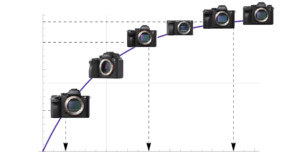
While reading the reaction to our coverage of the Sony a9 II announcement yesterday, one comment really stuck out to me as an excellent summation of a subject that's been buzzing around my mind for about a month now: "Sony reaching the edge of feasible. Now they don't know what to add anymore."

Canon is one of the most prolific companies in the world when it comes to filing patents, making it hard to judge what's actually coming down the pike. But we really hope its two most recent patents—one for Eye-Controlled Autofocus and another for Wireless Charging—become a reality.

Over the past five years, Sony has done more to push digital imaging forward than just about anybody else. But their incredible pace of innovation is straining an industry that just can't keep up, and the cracks are starting to show.

Lumapod is a new tripod design that has caught fire over at Kickstarter, blowing past its initial $40,000 goal in just 90 minutes and currently sitting at over $250,000 raised from over 1,700 photographers.

Canon has admitted that it's lagging behind other companies in innovation, and it's resolving to do better in the area.

Dear Canon,
You and I have had a very, very long friendship that has lasted many years and many, many generations of cameras. Ever since my first camera purchase, you have been my brand of choice. I still have my original Canon IXUS 40 and multiple generations of full frame and APS-C SLRs going back as far as the 450D, which was released in March 2008.

Spiffy Gear has just launched a new innovative LED light system called Spekular. Touted as "the Swiss army knife of LED lighting," the modular kit consists of LED light bars that can be connected and arranged in whatever shape you desire.

The Illuminati is the world's first Bluetooth light and color meter that works wirelessly with smartphones. It's a battery-powered device that connects to your iOS device, Android or smartwatch over Bluetooth, allowing you to take live readings without stepping away from your camera.

Lomography just announced what it suggests is its "most revolutionary optical innovation yet." It's called the Neptune Convertible Art Lens System, and as the name suggests, it's a modular lens set that lets you swap out various parts of the lens based on your needs.
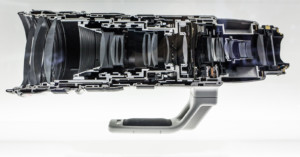
If you look at patents awarded as a measure of innovation, Canon is one of the most innovative companies on Earth. In 2016, Canon was granted the third most US patents of any company, beating out the likes of Intel, Microsoft, Apple, and even Google.

One of the most affordable ways to dabble in macro photography is reverse lensing. But while this typically means buying an adapter, it looks like Canon is considering building that second front-facing mount onto some of their lenses in the future, creating two lenses in one.

Canon announced today that it has developed a CMOS sensor with a global shutter, perhaps paving the way to future Canon DSLRs that don't suffer from the "rolling shutter" effect.

It's quite possibly the most anticipated camera announcement of the year, and it finally happened! Canon has revealed the long-awaited 5D Mark IV, with a new sensor, 4K video, and some interesting 'Dual Pixel RAW' capabilities.
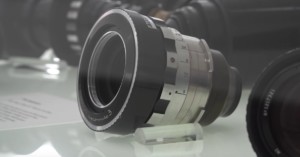
As iconic lenses go, perhaps no lens is quite as iconic as the famed NASA Zeiss f/0.7 glass Stanley Kubrick used to film a candle-lit scene using only natural light. In this video we get to see the lens, find out about the camera Kubrick modified to use it, and discover some of the tricks he employed to shoot that scene.

The camera has found its way into all kinds of products over the past couple of decades, from the phone in your pocket to the car you drive around. One of the latest everyday products to adopt a camera is one you've probably never thought would have one: the toothbrush. The Prophix is a new $400 toothbrush that has a built-in camera for capturing images of your teeth and gums.

In yet another example that maintaining dominance within a space cannot be taken for granted, Flickr announced earlier this month that they are only allowing auto-uploads from the desktop for paying customers. Wired declared “Time to Give up on Flickr, Everybody.”

UK-based photographer Jamie Brightmore tells us that he has been working on a new style of filmmaking: a "a bird's-eye aerial timelapse cinematography technique" that he calls the Satlapse. The 1-minute video above shows some sample Satlapse clips.

In the future, instead of buying a dedicated Canon lens for tilt and shifting movements, you may be able to simply buy a tilt-shift adapter for your existing EF lenses. A newly surfaced patent suggests that Canon has been working on that kind of universal adapter.
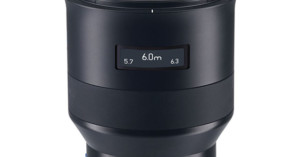
Now this is different: Zeiss has just announced a new line of lenses called Batis. The two new lenses -- a 25mm f/2 and an 85mm f/1.8 -- are the world's first full-frame autofocus lenses that feature an OLED display on the lenses for focus distance and depth of field.

Podo is a new wireless and sticky camera that serves as an on-the-go photo booth. Instead of shooting pictures of yourself at arms length, with a selfie stick, or with the help of a stranger, you'll be able to stick the camera to most flat surfaces and trigger the shot with your phone.

One of the main innovations found in the new Olympus OM-D E-M5 II is its ability to shoot massive 40MP photos with its 16MP sensor by doing "sensor shifting" and combining multiple shots. The main downside, however, is that you need a tripod to make sure the camera doesn't move between shots.
That may soon change: Olympus says its working on making the sensor shift technology work even when the photographer is shooting handheld without stabilization.
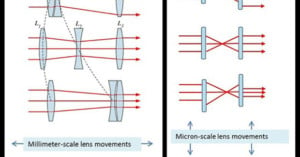
Smartphone cameras have improved exponentially since their introduction to the world, but one company still believes there's plenty of room for improvement. That company is DynaOptics and their latest tech is promising to pack optical zoom into more smartphones without adding any bulk to the phones at all.

Using the bones of a dying giant and a healthy dose of innovation, Sony built one of the most forward thinking lines of high-end cameras available in recent memory.
When they entered the serious photography market following their acquisition of the struggling Konica Minolta camera business, Sony brought the coffers and clout of an international conglomerate as well as the fresh eyes of a newcomer. Using those tools, they've pushed the technological envelope in a way that few others were willing or capable of doing and, now, are setting the benchmark for where others ought to be aiming. Oh, and they did it all in just eight years.

In a short appearance earlier today in Japan, inventor and Dyson founder Sir James Dyson dropped a line that is worthy of its own headline and should be forwarded to every head honcho at every camera company in the world. According to Engadget, he said, "A company that doesn't double its R&D team every two years, I think, is in trouble."

This is a long article, meant to be read at your leisure.
You better start swimmin’ or you’ll sink like a stone
For the times they are a-changin’. -Bob Dylan
Technology changes tend to be of two types: incremental improvements or disruptive innovations. Incremental improvements allow one manufacturer to take market share from another and give fanboys fuel for internet forums. Disruptive innovations may create a million new customers. Or make a million potential customers leave for some new hobby or way of doing things.

From a design concept to a crowd-funding campaign to a product backed by a major brand, the Polaroid Socialmatic represents an alternative to traditional product development methods. Is crowd-sourced innovation the shakeup that the photography industry needs?